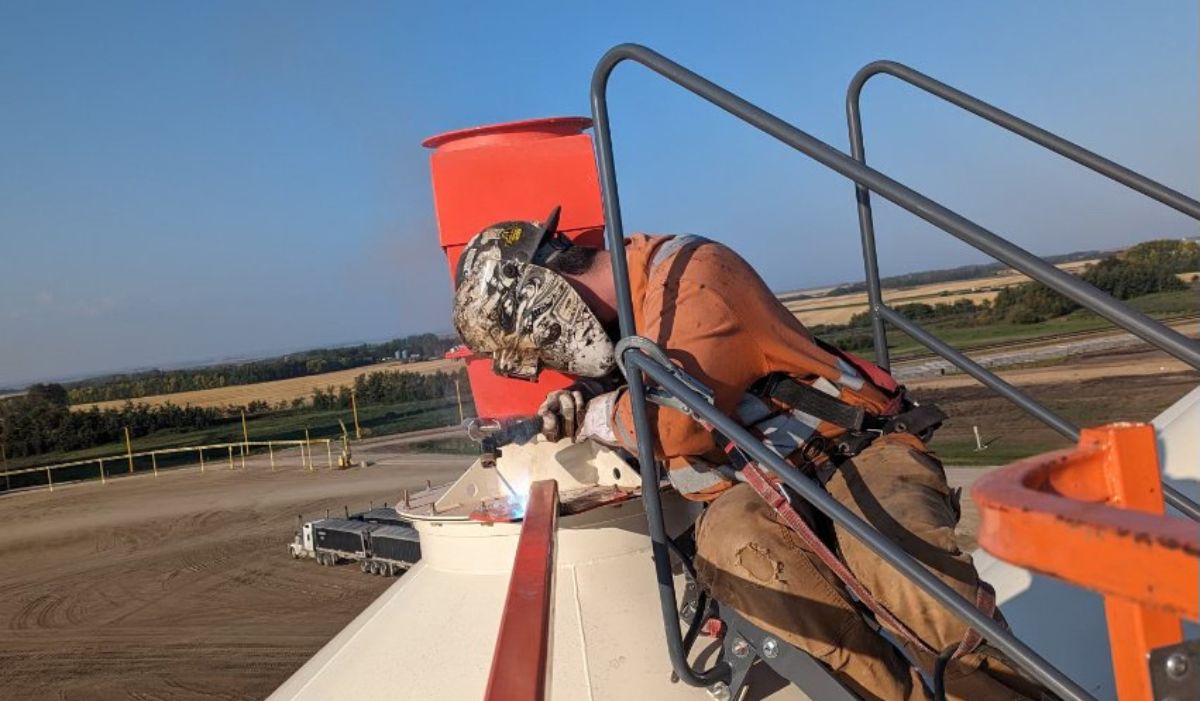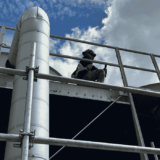12 Must-Know Facts About Structural Fabrication in the Canadian Industrial Sector
Structural fabrication is a cornerstone of Canada’s industrial sector, playing a crucial role in building everything from skyscrapers to bridges. In this blog, we’ll dive into some fascinating and essential facts about this industry, shedding light on its importance, processes, and innovations.
1. Historical Background of Structural Fabrication in Canada
The development of structural fabrication in Canada has deep historical roots. From the early days of railways to modern-day skyscrapers, this industry has evolved tremendously. Canada’s journey into structural fabrication began in the 19th century with the construction of expansive railway networks that connected vast territories. These early projects required large-scale metalwork and set the stage for future innovations in the industry.
As the 20th century rolled in, the focus shifted to urbanization and the construction of iconic skyscrapers. The emergence of cities like Toronto and Vancouver saw a surge in structural fabrication activities. Innovations in steel production and milling techniques allowed for taller and more resilient structures, marking a significant leap in the industry’s capabilities. Historic landmarks such as the Peace Tower in Ottawa and the Marine Building in Vancouver stand as testaments to the advancements in structural fabrication during this period.
2. Key Materials Used in Structural Fabrication
Steel, aluminum, and various alloys are the primary materials used in structural fabrication. Each material has its own set of advantages and applications, making them essential to the industry. Steel, known for its strength and durability, is a staple in large-scale projects. Whether constructing a high-rise building or a long-span bridge, the ubiquitous presence of steel cannot be overstated. Its ability to be recycled without losing quality also adds a sustainable edge to its popularity.
Aluminum, on the other hand, is prized for its light weight and resistance to corrosion. This makes it ideal for applications where lower weight can lead to significant benefits, such as in the aerospace industry or for decorative façade elements in modern architecture. Meanwhile, various alloys—combinations of metals—are also used to optimize properties such as tensile strength, flexibility, and resistance to environmental factors. The versatility of these materials ensures that structural fabrication can meet the specific demands of any project.
3. The Role of Technology in Modern Fabrication
Advancements in technology, such as computer-aided design (CAD) and automated welding systems, have revolutionized the structural fabrication process, making it more efficient and precise. CAD software has dramatically simplified the planning and design stages, allowing engineers to model complex structures with incredible accuracy. This technology helps in visualizing potential issues before they arise, thereby mitigating costly errors and delays.
Automated welding systems have also played a crucial role in enhancing the quality and speed of fabrication. Traditional welding methods require a high level of skill and can be time-consuming. Automation allows for consistent, high-quality welds at a much faster rate, reducing manual labor and improving safety. Additionally, advancements in robotics and the Internet of Things (IoT) for monitoring and maintenance are pushing the industry towards greater efficiency and reliability.
Another technological marvel shaking up the industry is 3D printing, particularly in the realm of prototyping and small-scale production. This technology allows for the creation of intricate geometries that would be challenging or impossible to fabricate using traditional methods. It’s opening new doors for creativity and customization in structural fabrication. As technology continues to advance, the possibilities for innovation in structural fabrication are virtually limitless.
4. Sustainability in Structural Fabrication
The industry is increasingly focusing on sustainability, employing eco-friendly materials and practices to minimize environmental impact. Sustainable structural fabrication involves using recycled materials and incorporating energy-efficient processes. For instance, steel is one of the most recyclable materials on the planet, and many fabrication companies strive to use recycled steel in their projects.
Recycling aside, there is also a concerted effort to improve the energy efficiency of fabrication processes. Modern factories are utilizing renewable energy sources, such as solar and wind power, to run their operations. Additionally, techniques like modular construction—where parts of a building are fabricated off-site and then assembled on-site—reduce waste and improve the overall efficiency of the construction process.
Moreover, green building certifications such as LEED (Leadership in Energy and Environmental Design) are becoming more prevalent, pushing the industry to adopt higher standards of sustainable practice. These efforts not only help in reducing the carbon footprint but also contribute to creating healthier, more sustainable communities. The future of structural fabrication is not just about building big; it’s about building smart and sustainably.
5. Skills and Training for Fabrication Professionals
Becoming proficient in structural fabrication requires specialized training and a diverse skill set, from welding techniques to understanding complex blueprints. The path often begins with a combination of formal education and apprenticeships. Trade schools and technical colleges offer courses that cover the fundamentals of metalworking, welding, and fabrication.
Apprenticeships provide hands-on experience and mentorship under seasoned professionals. This on-the-job training is invaluable for acquiring practical skills and understanding industry standards. Moreover, continuous education is crucial in this rapidly evolving field. Professionals must stay updated with the latest advancements in materials technology, software tools like CAD, and automation techniques.
6. The Economic Impact of Structural Fabrication
This sector significantly contributes to the Canadian economy, providing jobs and supporting related industries such as construction and manufacturing. Structural fabrication companies employ a wide range of professionals, from engineers and designers to skilled tradespeople, and administrative staff. This diversity of roles underscores the industry’s broad economic impact.
Beyond direct employment, the industry supports numerous ancillary businesses. Suppliers of raw materials, equipment manufacturers, and logistics companies all benefit from a robust fabrication sector. Additionally, completed projects like buildings, bridges, and factory plants further stimulate economic activity by creating functional infrastructure that supports other industries.
7. Major Projects in Canadian Fabrication
From the CN Tower to the Confederation Bridge, many iconic structures in Canada were made possible through advanced structural fabrication techniques. The CN Tower in Toronto, for instance, stands as a marvel of engineering and fabrication. Completed in 1976, it was the world’s tallest free-standing structure and remains a testament to Canadian ingenuity and skill.
Another significant project is the Confederation Bridge, which connects Prince Edward Island to mainland New Brunswick. Spanning 12.9 kilometers, it is the longest bridge over ice-covered waters in the world. The bridge’s construction involved significant structural fabrication to ensure its resilience against harsh environmental conditions.
8. Challenges Facing the Fabrication Industry
Despite its advancements, the industry faces challenges like supply chain disruptions, labor shortages, and the need for continuous technological upgrades. Supply chain issues can lead to delays and increased costs, particularly when sourcing specialized materials. These disruptions can have a ripple effect, impacting project timelines and budgets.
Labor shortages are another significant challenge. As older workers retire, there is a pressing need to attract and train the next generation of fabrication professionals. This necessitates ongoing investment in education and apprenticeship programs. Moreover, the industry must combat outdated perceptions to showcase the advanced technology and exciting career opportunities within structural fabrication.
Continuous technological upgrades require substantial investment and adaptation. Companies must balance the cost of adopting new technologies with the need to stay competitive. This often involves navigating complex decisions about which innovations will provide the best return on investment and how to implement them effectively.
9. The Future of Structural Fabrication
The future is bright with innovations such as 3D printing and modular construction set to transform the industry, making projects faster and more cost-effective. 3D printing, in particular, has the potential to revolutionize the industry by allowing for the creation of complex shapes and structures that would be difficult, if not impossible, to produce with traditional methods.
Modular construction, where components are manufactured in a factory setting and then assembled on-site, offers numerous advantages. It significantly reduces construction times and minimizes waste, making it both economically and environmentally beneficial. Additionally, this approach allows for greater precision and quality control, as factory settings are typically more controlled environments than construction sites.
10. Safety Standards in Structural Fabrication
Safety is paramount in structural fabrication, with strict regulations and standards in place to protect workers and ensure the integrity of the structures built. The industry adheres to guidelines set by organizations such as the Canadian Standards Association (CSA) and other regulatory bodies. These rules govern everything from material specifications to welding techniques, ensuring that the final structures meet rigorous safety criteria.
Worker safety is also a top priority, with comprehensive training and safety protocols designed to minimize risks. Personal protective equipment (PPE), safety drills, and regular inspections are standard practices on fabrication sites. Moreover, advancements in technology, such as automation and robotics, are continually improving safety conditions by reducing hazardous manual tasks.
11. The Role of Fabrication in Disaster-Resilient Structures
Fabrication techniques are essential in constructing disaster-resilient buildings and infrastructure, capable of withstanding earthquakes, floods, and other natural calamities. Modern engineering principles, combined with advanced materials, allow for the design and construction of structures that are not only robust but also flexible enough to absorb and dissipate energy from environmental stresses.
Innovations like base isolators and dampers are increasingly being incorporated into buildings to enhance their resilience. These devices can absorb seismic energy, thereby reducing the amount of stress transferred to the structure. In areas prone to flooding, elevated structures and water-resistant materials are becoming more common, thanks to advancements in fabrication techniques.
Collaborative efforts between structural engineers and fabricators have led to the development of design standards focused on resilience. These standards ensure that buildings and infrastructure not only meet but exceed the required safety margins, providing an added layer of security for occupants and users.
12. Collaboration and Innovation in the Industry
Collaboration between engineers, architects, and fabricators leads to innovative solutions and groundbreaking projects, pushing the boundaries of what’s possible. Effective communication and teamwork are crucial in translating complex design concepts into tangible structures. This synergy fosters an environment where creativity and practicality coexist.
One notable example is the use of Building Information Modeling (BIM), a collaborative tool that allows all stakeholders to work from a single, updated model of the project. BIM facilitates better decision-making, reduces errors, and improves overall project efficiency. By bringing together different disciplines, the industry can tackle complex challenges and drive innovation.



